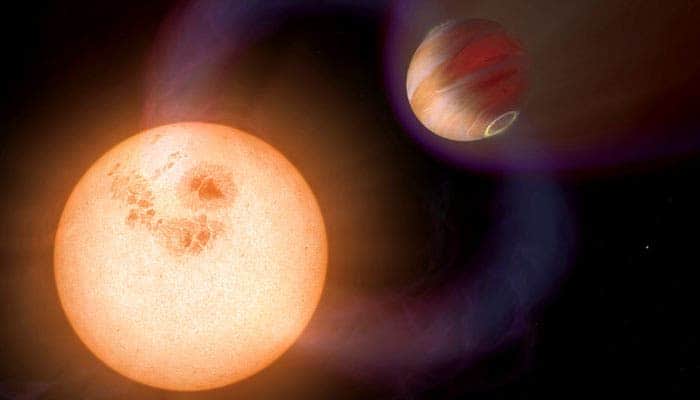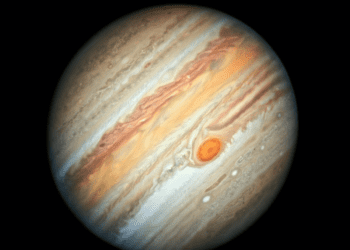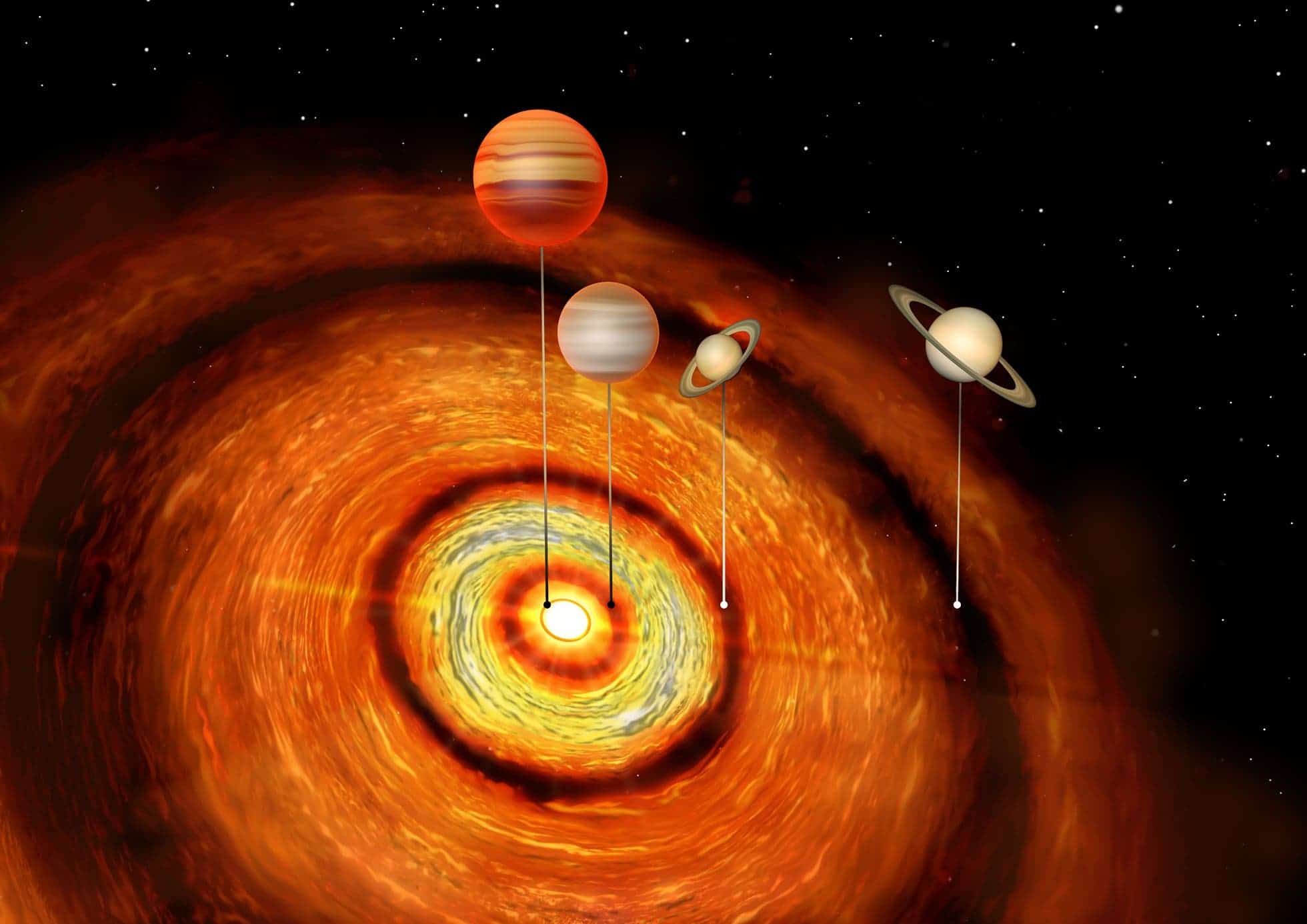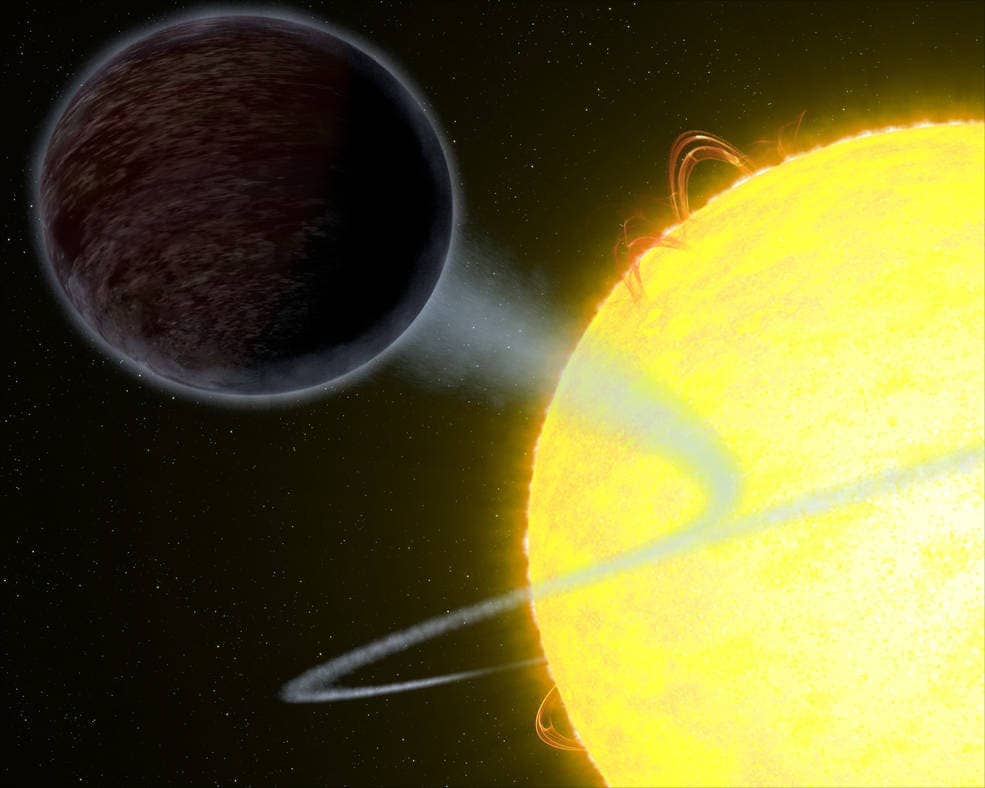About 300 light years away lies a weird planet, unlike any other astronomers have ever seen. Called WASP-18b, this hot giant has 10 times the mass of Jupiter and a peculiar atmosphere mostly made of carbon monoxide. The data suggests that there’s no water vapor to be found in its stratosphere, which could change our understanding of the formation of such planets.

WASP-18b was first identified by the Wide Angle Search for Planets survey which uses a double setup each comprising 8 cameras that cover 480 degrees of the sky. One set of cameras lies in the northern hemisphere, the other in the southern hemisphere. Since both setups entered operation in 2006, astronomers have used them to gather data on 30 million stars. By studying small changes or wobbles in the light of a star, scientists can determine whether a planet is passing by and, if yes, they can derive some of its properties. WASP-18b, along with another 100 planets or so have been discovered by the survey in this manner.
[panel style=”panel-info” title=”What’s a Hot Jupiter” footer=””]A ‘Hot Jupiter’ is an exoplanet like Jupiter but much hotter, with orbits that take it feverishly close to the parent star.[/panel]
This behemoth planet is quite different from many others discovered by the WASP survey or the prolific Kepler Space Telescope responsible for over 2,000 confirmed exoplanet sightings. When NASA scientists directed the lenses of the Hubble and Spritzer telescopes towards WASP-18b, they determined that there likely isn’t any water in the stratosphere which is instead largely made of carbon monoxide. Data suggests the stratosphere is packed with hot gas while the lower troposphere is dominated by cooler carbon monoxide.
“The composition of WASP-18b defies all expectations,” said Kyle Sheppard of NASA’s Goddard Space Flight Center in Greenbelt, Maryland.
“We don’t know of any other extrasolar planet where carbon monoxide so completely dominates the upper atmosphere,” Sheppard said.
The team determined the two types of carbon monoxide signatures at a wavelength of about 1.6 micrometers and an emission signature at about 4.5 micrometers. This is the first time researchers have detected both types of fingerprints for a single type of molecule in an exoplanet’s atmosphere.
With a smothering stratosphere loaded with carbon monoxide and devoid of water, the hot-Jupiter-class planet WASP-18b may have formed quite differently from our own Jupiter: https://t.co/dc8heHWTcl pic.twitter.com/TB5l3NbtIW
— NASA Goddard (@NASAGoddard) November 29, 2017
All of these observations point to the curious possibility that this planet may contain 300 times more metals than other exoplanets of similar mass. If that’s true, WASp-18b clearly did not form in the same way as other Hot Jupiters before it.
“This rare combination of factors opens a new window into our understanding of physicochemical processes in exoplanetary atmospheres,” said Nikku Madhusudhan, a co-author of the study from the University of Cambridge.
Findings appeared in the Astrophysical Journal Letters.






